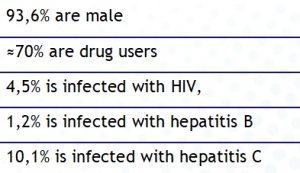Introduction
History of modern society is riddled with public health breakthroughs. Advances based on the notion of prevention of disease and promotion of good health allowed for better living conditions, safe transportation, diverse and nourishing diets, and numerous other standards of developed societies most of us take for granted.
In retrospect, we praise much of those advances as prototypal public health measures. Did ingenious minds behind those actions perceive themselves as public health pioneers? One might even argue that they needn’t identify as such (1). John Snow, Louis Pasteur and Robert Koch transformed the world through their work and for that they only had to subscribe to the ideal of public health – not to the profession. They were inventors that spawned a health revolution. But times have changed. We are faced with globalised world, global warming and regular political tantrums with possibly perilous consequences (2). Nations of the world are putting health high on the agenda with concerted actions such as Millennium Development Goals and Sustainable Development Goals (3). Further advancement of public health demands a different toolset and approaches from those of past eras. This holds true for public health practice on international as well as on an national or even local level (4). Modern challenges of public health require a workforce with capacities to address and overcome them (5,6). Public health practitioners of today and tomorrow need to be leaders as much as scientists and inventors (7). Development of such a workforce is the common theme of following reflections provided by a group of professionals with deep insight into education and training practices in public health.
The collection of reflections starts with an overview of current status and recent initiatives in public health workforce development in the European region written by Robert Otok, Katarzyna Czabanowska, and John Middleton who are all active in Association of Schools of Public Health in the European Region, a key independent European organisation dedicated to strengthening the role of public health by improving education and training of public health professionals for both practice and research.
Alberto Mateo, president of the European Network of Medical Residents in Public Health, further reflects on the topic of international cooperation and on importance of internationally harmonised curricula in public health education. Afterwards authors focus on analysing and reflecting on public health workforce development in Slovenia. Tit Albreht from National Institute of Public Health addresses the challenge of diversification of public health workforce in Slovenia. In his commentary, he stresses the importance of standard education as well as continuous professional development. Recognising the importance of having a modern and comprehensive public health educational programme for medical residents, Lijana Zaletel Kragelj from Faculty of Medicine at University of Ljubljana provides us with a summary of the transformation of Slovenian public health specialty training programme from its conception and offers us with a glimpse of what we can expect in near future. Ivan Eržen from National Institute of Public Health completes the overview of graduate and postgraduate programmes which offer public health topics in their curriculums. Acknowledging the limitations of current landscape of educational opportunities in public health he points out the need for a school of public health which has yet to be established in Slovenia. In the following commentary, Marjan Premik, one of the main protagonists of establishment of school of public health in Slovenia, introduces arguments for school of public health as an integral part of health care system. Putting the emphasis on the wider public health workforce, Mitja Vrdelja from National Institute of Public Health, gives his view on working in public health in Slovenia from a communications expert perspective and complements reflections on workforce developments from previous authors with challenges that could be solved with appropriate education and training of public health workforce. Current Perspectives are rounded up with a playful note by a discussion I had with Damir Ivanković, a former public health resident from Croatia who is presently a researcher at the Academic Medical Center in Amsterdam. Since both of us are a young public health professionals from relatively small countries we take a look at benefits and drawbacks of starting a career in such an environment.
Matej Vinko
National Institute of Public Health of Slovenia, Ljubljana, Slovenia
Keep reading the article at:
http://www.nijz.si/sites/www.nijz.si/files/uploaded/vinko_jz_03-06.pdf
References
- Nijhuis HG, van der Maesen LJ. The philosophical foundations of public health: an invitation to debate. J Epidemiol Community Health. februar 1994.;48(1):1–3.
- Lomazzi M, Jenkins C, Borisch B. Global public health today: connecting the dots. Glob Health Action. 2016.;9:28772.
- Sachs JD. From Millennium Development Goals to Sustainable Development Goals. The Lancet. 9. junij 2012.;379(9832):2206–11.
- Birt CA, Foldspang A, Otok R. Meeting the population health challenge: what should you know, and what should you be able to do? Eur J Public Health. oktober 2018.;28(5):789–90.
- Bjegovic-Mikanovic V, Foldspang A, Jakubowski E, Müller-Nordhorn J, Otok R, Stjernberg L. Developing the public health workforce. Eurohealth Inc Eur Obs. 2015.;21(1):24–7.
- Collyer TA. Three Metaphors to Aid Interdisciplinary Dialogue in Public Health. Am J Public Health. 25. september 2018.;e1–4.
- Czabanowska K, Rethmeier KA, Lueddeke G, Smith T, Malho A, Otok R, in sod. Public health in the 21st century: working differently means leading and learning differently. Eur J Public Health. december 2014.;24(6):1047–52.
As published in Revija Javno zdravje



